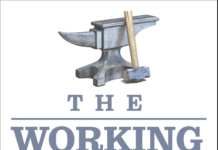
The Council of Trade Unions today welcomed the Government announcement that Kiwirail would retain 15 electric engines on the Northern Trunk Line between Hamilton and Palmerston North. Secretary Sam Huggard said that it was a perfect example of ‘Just Transition’ thinking, to protect good jobs and public services in a low – carbon economy.
“Climate campaigners and unionists have all been pushing for this forward – thinking move. We can upgrade the good electric engines we already have using local skills, rather than import diesel engines from overseas. We don’t have time, or room for short-term decisions or backwards steps that aren’t future-proofed – the world is moving to a net-zero emissions standard, and New Zealand has to move with the times too.”
“The Government’s decision today is not only a demonstration of their commitment to campaign promises, but an example of how we can benefit regional economies and working people in New Zealand, while protecting our environment. The concept of a Just Transition to a sustainable economy has been well-defined in the union movement for a long time now. Ministers providing yet more concrete examples of a Just Transition in practice will give working people confidence in our low-carbon future.”





It all makes perfectly logical sense.
We need to wean ourselves off fossil fuels.
Beginning with the heaviest users of diesel; – which are as we all know is the road freight industry, as we to switch back to rail here around all regions.
I was informed today that Fonterra are requesting to Kiwirail to restore the central regional Stratford to Ohakune rail freight for them to use the rail to move their products across the whole central regional plateau from Taranaki to HB and all other regions export ports.
Labour need to invest heavily in rail for our collective security and our children’s future.
New Zealand had a thriving coastal shipping trade not too long ago.
Scows loaded wool from sheep stations around the country, at the nearest coastal spot suitable. Jetties around the coast served small and larger communities as well as wharves in towns and cities.
Loading was achieved in many ways depending on local facilities and type of goods.
The scows used sail where ever possible but had engines which added to safety and navigation in poor conditions.
All fairly low tech so the ships lasted many decades.
Some exports were delivered to ports by sea and then loaded to larger freight vessels so were not carried by road nor rail.
Larger ships moved goods between the many ports some of which are now seldom used.
When the crazy unregulated road transport is rationalised towards transition, then coastal shipping can fill an important role in essential supply to communities not serviced by Rail and better served by Sail.
https://sailingdog.org/sail-freight-projects-around-the-world/
Comments are closed.